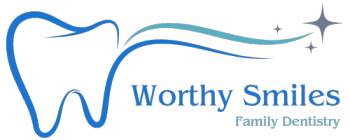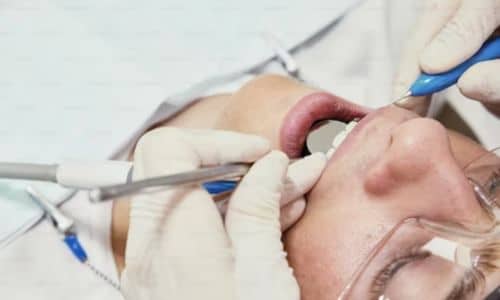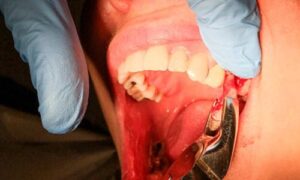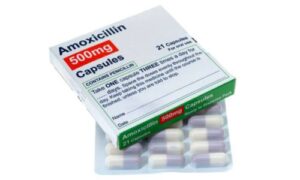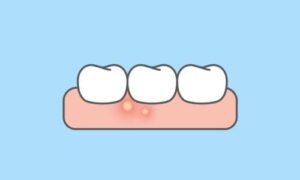Introduction
In recent years, Botox has gained popularity not only as a cosmetic treatment but also for its remarkable therapeutic applications. Botox Can Help TMJ Temporomandibular Joint (TMJ) disorder’s pain management. TMJ disorder is a condition that affects millions of people worldwide, causing jaw pain and discomfort. This article explores how Botox can help alleviate TMJ and other types of pain, relieving those suffering from these conditions.
Understanding TMJ (Temporomandibular Joint) Disorder
The temporomandibular joint acts as a sliding hinge, connecting your jawbone to your skull. It allows you to perform essential functions like chewing, speaking, and yawning. When this joint becomes damaged or inflamed, it can lead to TMJ disorder. The disorder often results from injury, arthritis, or excessive teeth grinding.
Causes of TMJ Disorder
TMJ disorder can have various causes, and its development is often influenced by factors such as:
Trauma or Injury:
One of the primary causes of TMJ disorder is trauma or injury to the jaw. Accidents falls, or any impact on the jaw region can disrupt the proper functioning of the temporomandibular joint. The trauma can lead to misalignment, damage to the joint structures, or inflammation, resulting in TMJ disorder. Adequate care and immediate medical attention are essential to prevent further complications.
Bruxism (Teeth Grinding):
Bruxism, or teeth grinding, is a common cause of TMJ disorder. It often occurs during sleep and is associated with stress, anxiety, or sleep disorders. The constant grinding and clenching of teeth exert excessive pressure on the jaw joint, leading to muscle tension, inflammation, and pain. Over time, untreated bruxism can worsen TMJ symptoms, making it vital to address the underlying cause and seek appropriate treatment.
Arthritis:
Arthritis, particularly osteoarthritis and rheumatoid arthritis, can affect the temporomandibular joint. In the case of TMJ disorder, the inflammation in the joint can cause pain, stiffness, and limited jaw movement. Managing arthritis through medication, physical therapy, and lifestyle changes can help alleviate TMJ symptoms in those affected.
Symptoms of TMJ Disorder
The symptoms of TMJ disorder can vary from mild to severe, and they may include:
Jaw Pain:
Jaw pain is one of the hallmark symptoms of TMJ disorder. The pain may be localized around the jaw joint or radiate to other face, neck, and shoulder areas. The intensity of the pain can range from mild discomfort to severe, making it challenging for individuals to eat, speak, or yawn comfortably.
Difficulty in Chewing:
People with TMJ disorder may experience difficulty chewing or even speaking. The pain and discomfort in the jaw joint make it challenging to open and close the mouth properly. As a result, individuals may avoid certain foods or modify their eating habits to minimize discomfort.
Clicking or Popping Sounds:
A common sign of TMJ disorder is the presence of clicking, popping, or grating sounds when moving the jaw. These sounds may occur during chewing or when opening and closing the mouth. The noises result from the misalignment or damage to the joint’s cartilage and can be accompanied by mild to moderate pain.
Headaches and Earaches:
TMJ disorder can lead to headaches and earaches, as the jaw joint is closely connected to the surrounding facial structures. The pain from the joint can radiate to the temples, forehead, and ears, causing headaches and ear discomfort. These symptoms can be mistaken for other medical conditions, leading to delayed diagnosis and treatment.
How Botox Works
Botox, short for Botulinum toxin, is a neurotoxic protein derived from the bacterium Clostridium botulinum. In cosmetic procedures, it is widely known for its ability to reduce the appearance of wrinkles by temporarily paralyzing facial muscles. However, its applications extend beyond aesthetics.
Botox for TMJ Disorder
Botox for TMJ disorder involves injecting small amounts of the toxin into the affected muscles around the jaw area. It works by blocking the release of acetylcholine, a neurotransmitter responsible for muscle contractions. By doing so, Botox effectively relaxes the muscles, relieving TMJ-related pain and tension.
Benefits of Botox for TMJ and Other Pain
Botox treatment for TMJ disorder offers several benefits:
1. Pain Relief
Botox effectively reduces jaw pain and discomfort, allowing individuals to carry out their daily activities without hindrance.
2. Muscle Relaxation
The muscle-relaxing properties of Botox help ease tension in the jaw, reducing bruxism-related issues and preventing further damage to the joint.
3. Non-Invasive Treatment
Unlike surgical interventions, Botox injections are minimally invasive, making them a safer and more convenient option for many patients.
The Procedure: What to Expect
Before administering Botox injections, a qualified healthcare professional will thoroughly evaluate the appropriate dosage and injection sites. The procedure is relatively quick, typically taking 15 to 20 minutes. Patients may experience mild discomfort during the injections, but numbing cream can alleviate pain.
Finding a Qualified Professional
It is crucial to seek the services of a certified and experienced healthcare professional when considering Botox treatment for TMJ disorder. Proper training and expertise ensure safe and effective results.
82% of adults think that straight and bright teeth provide an advantage in life.
Potential Side Effects
While Botox is generally safe when administered by a skilled professional, some potential side effects may include:
Pain Relief:
One of the primary benefits of Botox treatment for TMJ disorder is its ability to provide adequate pain relief. TMJ disorder often causes persistent jaw pain and discomfort, making it challenging for individuals to carry out their daily activities. Botox works by blocking the release of acetylcholine, a neurotransmitter responsible for muscle contractions. Doing so temporarily paralyzes the targeted muscles around the jaw area, reducing muscle tension and alleviating pain.
The relief provided by Botox injections allows individuals to experience improved jaw mobility and decreased discomfort. It enables them to eat, speak, and perform regular activities without constant pain. Moreover, pain relief from Botox can enhance the overall quality of life for those suffering from TMJ disorder, providing them with much-needed comfort and ease.
Muscle Relaxation:
Apart from its cosmetic applications, Botox is known for its muscle-relaxing properties. In the context of TMJ disorder, excessive teeth grinding (bruxism) is a common issue that can contribute to the condition’s progression. Bruxism puts significant pressure on the jaw joint, leading to muscle tension and exacerbating TMJ symptoms.
Botox injections help relax the facial muscles responsible for jaw movement, reducing the intensity of bruxism. By limiting the force exerted on the temporomandibular joint, Botox prevents further damage and provides a therapeutic effect that can complement other treatment approaches. Muscle relaxation also aids in minimizing headaches and facial pain associated with TMJ disorder.
Non-Invasive Treatment:
Another significant advantage of botox that can help TMJ disorder is its non-invasive procedure. Botox injections are relatively simple and quick, unlike surgical interventions, which may carry risks and involve a more extended recovery period.
The procedure typically takes 15 to 20 minutes and is performed in an outpatient setting. It involves using fine needles to administer the Botox to the targeted muscles. Additionally, numbing cream can be applied to the injection site to minimize discomfort during the procedure.
Botox is a non-surgical option that appeals to many patients seeking relief from TMJ pain without undergoing more invasive treatments. The minimal downtime associated with Botox allows individuals to resume their daily activities shortly after the procedure, making it a convenient choice for those with busy schedules.
Safety Precautions
Pregnant or nursing women should avoid Botox treatment, and individuals with certain neuromuscular disorders should consult their healthcare provider before the procedure.
Botox as a Non-Surgical Alternative
It provides a non-surgical alternative for pain relief from TMJ disorder, offering an effective and less invasive option than other treatments.
Botox for Pain Management in Other Conditions
Apart from TMJ disorder, Botox has shown promise in treating various chronic pain conditions, such as migraines, cervical dystonia, and lower back pain.
Conclusion
Botox has become a valuable therapeutic tool, relieving individuals suffering from TMJ disorder and other chronic pain conditions. It’s muscle-relaxing properties and non-invasive nature make it an appealing option for those seeking a solution to their pain. However, it is crucial to remember that a qualified professional should always administer Botox treatment to ensure safety and optimal results.
